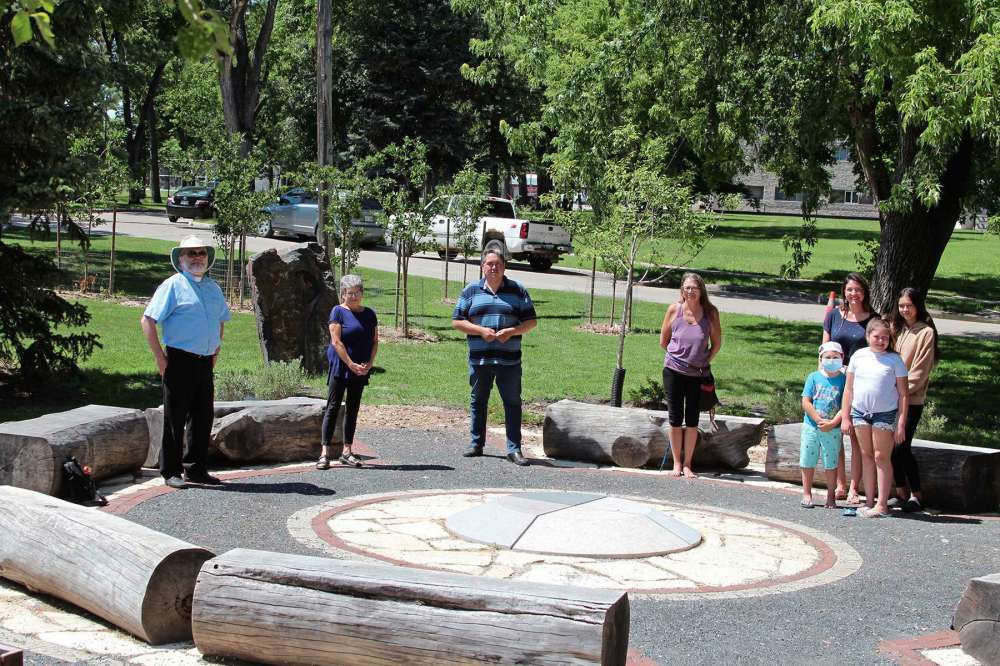Healing Forest receives new name
Phase Two of the forest design plan continues this summer
Advertisement
Hey there, time traveller!
This article was published 20/07/2020 (1899 days ago), so information in it may no longer be current.
The Healing Forest at St. John’s Park has been given a new name and will continue Phase Two of the project this summer.
An unveiling of the forest was held last September, where the traditional spirit name, offered by Elder Peetanacoot Nenakawekapo, was announced. The new name given to the space was Kapabamayak Achaak, meaning Wandering Spirit in Ojibwe, along with the colours yellow, blue, and green.
“(Peetanacoot) said … you’re really wandering around the bush looking for those medicines and those spirits, so it’s Wandering Spirit — who you are when you’re gathering medicines,” said Val Vint, a member of the planning group, about Nenakawekapo’s reason behind the name.

Phase Two calls for a garden with more medicine plants, and for an additional gathering circle to be built near the existing one.
Last fall, Métis-Cree artist Natalie Rostad-Desjarlais completed artwork on four boulders, representing the four directions: east, south, west, and north. Various animals and people are depicted on the rocks.
The idea of developing a healing forest in Winnipeg dates back to 2017, when University of Winnipeg education professor Lee Anne Block responded to the National Truth and Reconciliation Commission’s Calls to Action, specifically regarding education on reconciliation and the history of colonialism.
Block assembled a team of community members, who shared a common goal of creating a space for learning and healing, and could also serve as a living memorial to children who died in residential schools, as well as survivors. The Healing Forest was largely funded by the City of Winnipeg, Province of Manitoba, and The Winnipeg Foundation.
Since the project’s initial phase, which saw the installation of benches, a granite medicine wheel, and trees planted, the Kapabamayak Achaak Healing Forest has evolved over time and has hosted numerous visitors for different occasions — something the planning group hopes will continue.
“It’s our way of providing a space for building better relationships for all members of the community,” said Judy Wasylycia-Leis, a member of the planning group.
The space, which is located between Main Street and the Red River, has so far been used for drumming circles, a graduation ceremony, sharing circles, and land-based learning.
Rachelle Carlisle, an Indigenous researcher and educator at Seven Oaks School Division, brings her students to the Healing Forest as a way to move education outside of the traditional classroom.
“Initially this space was to be used as a place to learn and a place to go to; to bring students to learn about culture, and history, and to connect the past to the future to the present. And it’s also reflecting our Indigenous ways and in our curriculum, as well,” said Carlisle, who is also a member of the planning group.
The Healing Forest planning group has an ongoing partnership with the St. John’s Cathedral across the street from the park, and has been using the church’s charitable number for donations. One hundred per cent of the funds donated to the Healing Forest through the cathedral stays with the forest.
However, the planning group is seeking non-profit status and hopes to gain its own charitable number in the future.
More information about donations and the Kapabamayak Achaak Healing Forest can be found on Facebook.




